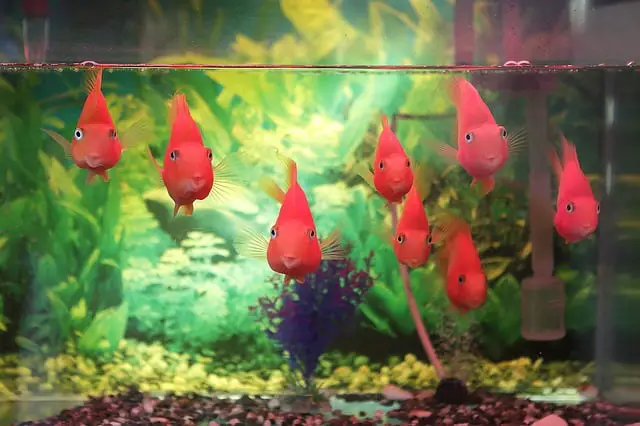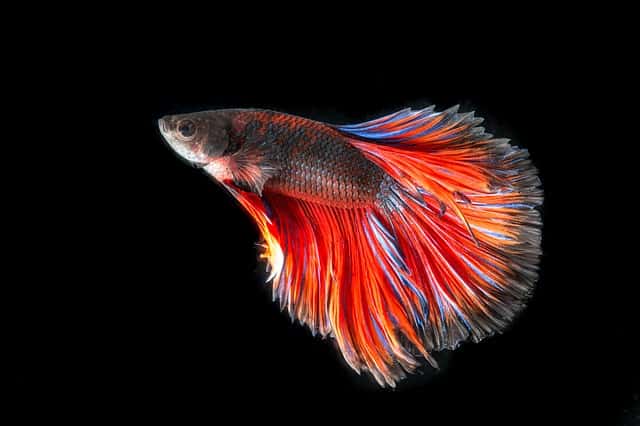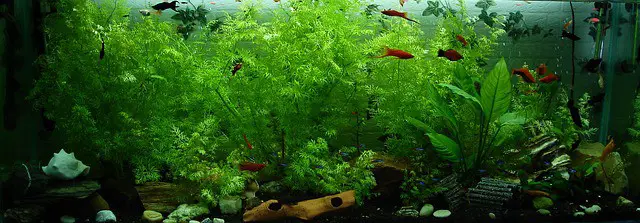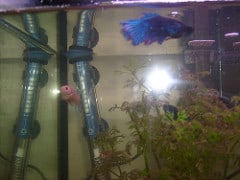The key piece of equipment for any aquarium hobbyist is the tank. With so many different options available, choosing the right tank can be tricky – especially when it comes to ones without lids. You may be looking to purchase a new, more modern-looking aquarium without a lid and are wondering if it’s okay to do so? Well, the answer is…
Yes, you can have a fish tank without a lid, though it’s not usually recommended. While there are both pros and cons to not using a lid, the risks tend to outweigh the rewards. In my opinion, you should opt for a tank with a lid whenever possible, but the choice is ultimately yours and should be made based on your individual needs and preferences as an aquarium hobbyist.
Now that you know you can have a fish tank without a lid, let’s explore this topic further. In this article, I’ll list the pros and cons of an aquarium lid, whether it’s okay to leave the lid off occasionally, how high the water level in a tank should be, and what the different types of lids look like.
I’ll also discuss which types of plants grow better in open tanks and which species of fish will jump out of a lidless aquarium.
So, if you’re ready to learn more about the advantages/disadvantages of tanks without lids, then let’s get to it!
Do You Need an Aquarium Lid (Canopy)?
While you don’t necessarily need a lid on an aquarium, it’s often recommended that you use one. It prevents fish from jumping out of the tank and reduces evaporation. No lid means you need to keep topping up the water. Evaporation also contributes to higher humidity levels in your home.
Can You Leave the Lid Off a Fish Tank?
You can keep the lid of your fish tank off if you prefer. However, you’ll need to keep a closer eye on your fish as a result. You must ensure they don’t jump out of the tank when you’re not home as they’ll die if not placed immediately back in the water.
What are the Advantages of Having a Lid on a Fish Tank?
There are more pros than cons when it comes to having a lid on your fish tank. The advantages include the following:
Keeping Your Fish Safe
Aquarium lids help your fish stay safe by keeping them inside the tank. There are many that like to swim near the surface of the water. And just like fish in the wild, those in captivity will often jump up to catch flying instincts. A lid prevents them leaping out and landing on the floor which could cause their death.
An aquarium lid also keeps fish safe by preventing foreign objects from landing in the tank. Pictures on a wall, room decorations, or anything that happens to get ‘tossed’ (if you have kids that like to play ball in the house then you know what I’m talking about) can fall into the tank and injure or kill your fish.
Aquarium lids are necessary for keeping fish safe mainly if you have other pets (like cats) in your home. Furry felines love to put their paws into water, especially if they see fish swimming about! Even if they don’t manage to catch the fish, they’ll definitely scare them and possibly knock something into the tank.
Preventing Evaporation
An aquarium lid will prevent water from evaporating. Evaporation will bring the water down to a level that won’t allow the filter to function properly. It’ll also leave a higher concentration of mineral deposits in the tank. This will then require more work such as continually topping up and cleaning the tank.
Reducing Humidity
Aquarium lids prevent evaporation. This, in turn, reduces the amount of humidity in your home. As water converts from air to vapor, it adds moisture to the surrounding area. Excessively high humidity can make for an uncomfortable living environment.
Averting the Emission of Odors
Off-putting smells will emit from your tank, especially if it’s been a while since the last water change or cleaning. An aquarium lid will keep these pungent scents caused by ammonia and nitrogen gas build-up from wafting into the room.
What are the Advantages of Not Having a Lid on a Fish Tank?
There are more cons than pros when it comes to not having a lid on your fish tank. However, the so-called ‘pool’ designs (which are aquariums without a fixed cover) do have one main advantage in that there are fewer visual obstructions near the top of the tank. This allows for better viewing of the activity along the surface of the water.
Though pool design tanks make it easier to feed your fish as well as rearrange the landscape, keeping your aquatic pets safe is of the utmost importance and a lid helps ensure this. While open tanks also provide more mounting options for lights, filters, and heaters, the aesthetic possibilities don’t outweigh the safety risks.
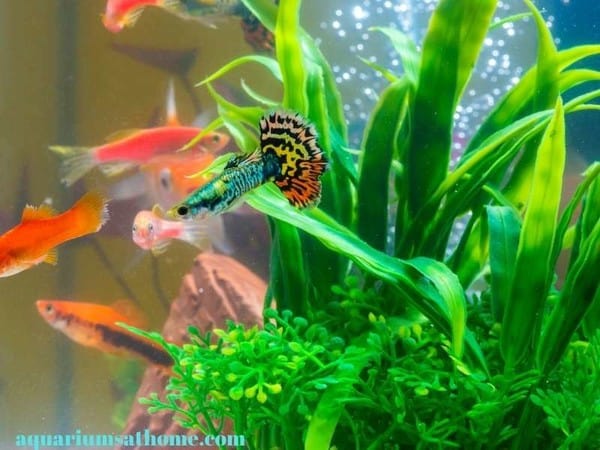
Do Plants Grow Better in Tanks Without Lids?
Some aquatic plants will indeed grow better in a tank without a lid. Lidless aquariums allow live plants to grow up and out of the water. This helps them reach their full growing potential. Lidless aquariums also provide more light and extra oxygen to the parts of the plant outside the water. Java Fern, Amazon Sword, and Water Wisteria are all examples of tall-growing aquatic plants.
What Types of Fish Will Jump Out of a Tank Without a Lid?
If you have a tank without a lid, you must ensure the fish you keep aren’t jumpers! Guppies are known for jumping out of their tanks, so they need a lid on their aquarium. Betta fish as well will jump up and out of the water so their aquarium must be covered too.
Goldfish are also jumpers so keeping them in a large, covered tank or an outdoor pond is recommended.
What are the Different Types of Tank Lids?
Aquariums come in all shapes and sizes. When it comes to tank lids, there are 3 main types. These include the following:
Glass Covers
Glass lids prevent evaporation and fit seamlessly on top of an aquarium. They’re generally easier to clean than plastic covers and are longer lasting as well. Most are made with 2 glass panels that are connected in the middle by plastic hinges.
Check out these glass covers for aquariums available online through Amazon.
Hoods
Hood covers fit over an aquarium light and come with plastic lids that sit atop a tank. They tend not to fit as securely as glass lids and therefore allow for more evaporation. Because they’re made of plastic, they can become brittle and break over time.
Check out these aquarium hoods available online through Amazon.
Canopies
Canopy covers are more decorative than glass lids of or hoods and usually cover both the tank and the housing for the aquarium light. While they add a nice, finishing touch to the tank, they aren’t a necessity and are mainly chosen for aesthetic or ornamental purposes.
How High Should the Water Level be in a Fish Tank? (With or Without a Lid)
It’s imperative to keep the water level in your fish tank topped up, regardless of whether you have a lid on it or not. Not only your fish but the aquariums equipment needs to be submerged at the appropriate levels to function properly.
For instance, aquarium filters require at least one inch of water above the intake of the filter, this allows for some evaporation in between tank top ups. I recommend you check the water level every few days. Always have a container of treated water at the ready to add to the tank when needed. I keep a 10-gallon jug of water ready for fish tank top ups.
Some people think if you keep the water level lower it will help to prevent fish from jumping out. For the inch or so that the water is either topped up or lower it just doesn’t matter. A fish will jump higher than that if it chooses too. If you are concerned about fish jumping out, then you need to put a canopy on your tank. The anxiety just isn’t worth it.
Conclusion
To conclude, you can have a fish tank without a lid, though it’s not often recommended. There are both pros and cons to not using a lid, but the negatives usually outweigh the positives. Personally, I prefer a tank with a lid however, the choice is yours and should be made according to your specific needs as an aquarium hobbyist.
I hope this article has provided you with the information you seek regarding the open or closed fish tanks. Thanks for reading and good luck with your aquarium hobby.
Related Posts
Is It Bad to Leave The Fish Tank Light On? (Important to know)
How Long Do Fish Tanks Last? (Glass Versus Acrylic)
How Long Can an Aquarium Sit Empty?



